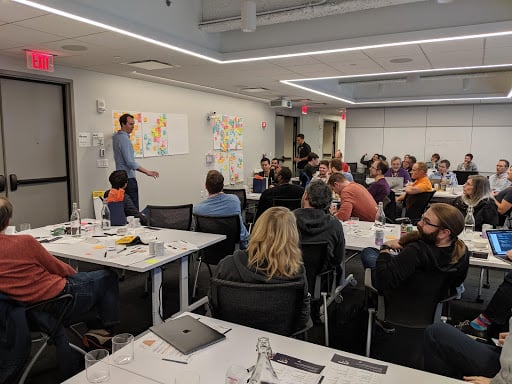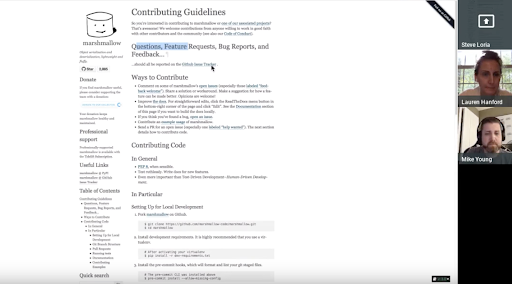Designers are often tasked with delivering broad, strategic thinking on sketches, states, flows, and experiences. What does it look like to apply that same expertise to an organization? As the head of design, my most important design project right now is designing the product organization. This creates an opportunity to understand an ever-evolving business problem and experiment with alternative approaches.
To that end, we’re (1) breaking into smaller product development teams while infusing more design methodology and (2) hiring!
We strive to use a design thinking process in all of our work here—the founding team intentionally baked that thinking into the company from the beginning, because of the effectiveness of the practice they'd seen up close in past companies. For the product team, that means following a methodology of Defining a problem, Understanding it (through research), Ideating, Building (shipping!), and Learning. The entire point of this process is to keep an understanding of your users at the center of your product development. A design thinking approach requires a product team to have an intentional research practice from the outset to keep the team building real things for real people.
Being aware of what phase we’re working in helps guide the kinds of activities we’re engaged in, and how we’re communicating with each other.

A user-centered approach also requires a divergent and convergent mindset at different points along the product development journey. Being aware of what phase we’re working in helps guide the kinds of activities we’re engaged in, and how we’re communicating with each other. (These mindsets also emerge in our company values of being both additive and practical.)
In order to parallelize work, infuse more user-centered process, and ship faster, we've broken product development work into smaller teams. What this means in practice is that each small team has all of the skills needed to design, build, and ship features or enhancements. No one is blocked; all is in harmony.*
A design thinking approach requires a product team to have an intentional research practice from the outset to keep the team building real things for real people.

The product organization that we're building is bringing product and design together to amplify the strengths of each—research methods, prototyping, trade-offs and prioritization, testing, measurement, iteration… there’s so much that each role can learn from working closely together. We’re looking to add people to our team that want to fall in love with the customer problems we’re exploring and learn from each other along the way.
We're bringing in product managers that can flourish in the uncertainty of the early design process, and are eager to talk to maintainers, CTOs, engineering managers, and developers to better understand what's on their minds. Developers get to decide how they'll do their own work, rather than be externally managed by someone who isn’t coding. Product gets to spend more time on understanding the customer and their journeys, rather than getting stuck doing project management. This is intended to create more ownership, buy-in, and happiness for everyone involved. (Ultimately, this empowers tech leads to guide the engineering work in a more effective way, which is probably a whole other blog post.)
We're bringing in designers that know how to leverage the experience of our own internal engineering team to think through potential solutions. Collaborating with engineering is not a hand-wavy thing here—we rely on each other to make the best decisions we can quickly, in the service of the user research we have available.
* Well...almost. We're looking to hire a product designer right now to bring new skills to the team. If working closely with engineering through a user-centered design process resonates with you, please apply. We're scaling engineering and product design at a 3:1 ratio, and it's time to bring in more design power!

 50 Milk St, 16th Floor, Boston, MA 02109
50 Milk St, 16th Floor, Boston, MA 02109